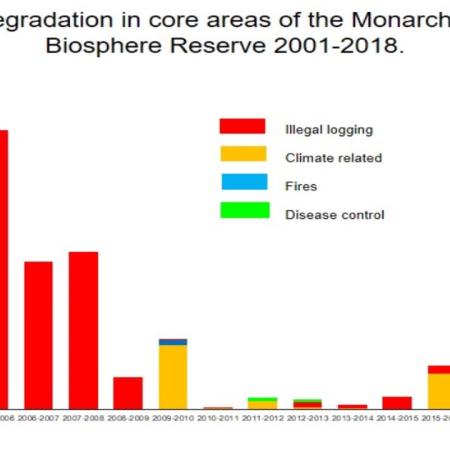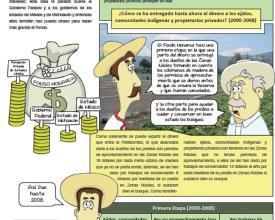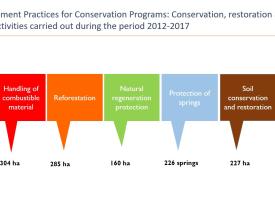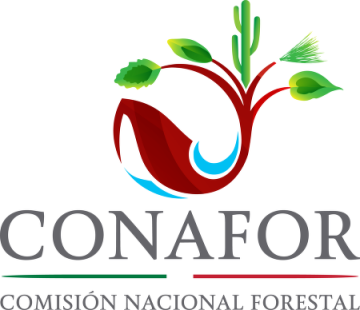Fonds Monarch : sauver le papillon monarque

Le Fonds Monarque (MF) est une stratégie de conservation basée sur des incitations économiques pour les propriétaires forestiers dans la zone centrale de la Réserve de biosphère du papillon monarque (MBBR). Les paiements pour les droits d'utilisation des forêts ont pris fin en 2008, ce qui a permis de passer à un système de paiement pour les services environnementaux (PSE) basé sur la superficie conservée, en augmentant le montant grâce aux contributions de la Commission nationale des forêts (Conafor).
Le MF a été créé en tant que fonds de dotation au sein du Fonds mexicain pour la conservation de la nature (FMCN) avec une contribution de 7,5 millions de dollars américains. Chaque année, le comité technique du fonds identifie les terres qui n'ont pas été déboisées et octroie des paiements à 34 communautés.
Contexte
Défis à relever
Des études scientifiques ont montré que la moitié de la couverture forestière la mieux conservée de la réserve de biosphère du papillon monarque (MBBR) a été dégradée au cours de la période 1971-1999, principalement en raison de l'exploitation forestière illégale. C'est pourquoi il a été suggéré au gouvernement mexicain d'étendre la zone centrale de la réserve et de créer des zones protégées contiguës afin d'assurer la protection de l'habitat actuel et potentiel du papillon monarque et d'autres espèces, ainsi que l'approvisionnement en eau des communautés.
Il a donc fallu concevoir un mécanisme financier permanent, le Fonds Monarque, qui couvrirait de manière adéquate les intérêts économiques des propriétaires des forêts situées dans la zone centrale, en les encourageant à maintenir les forêts dans un bon état de conservation et à se conformer aux dispositions établies dans le programme de gestion du MBBR.
Emplacement
Traiter
Résumé du processus
Il existe un cadre institutionnel clair qui facilite le fonctionnement du Fonds Monarch sur le terrain.
Le FM fait partie du Fonds pour les zones naturelles protégées (FANP) du FMCN, une initiative publique-privée entre le FMCN, le gouvernement mexicain et la Banque mondiale. Le FANP est constitué de ressources de dotation dont les intérêts sont canalisés vers 30 zones naturelles protégées prioritaires dans le pays.
Le FANP dispose d'un Comité technique du FANP (CTFANP) qui supervise son fonctionnement, y compris le FM. Ce comité est composé de sept membres issus de différents secteurs, qui sont nommés par le Conseil national des zones naturelles protégées et ratifiés par le conseil d'administration du FMCN.
Une autre composante du FM est le Comité technique du Fonds Monarque (CTFMM), qui approuve les paiements annuels aux ejidos et aux communautés qui ont respecté les règles de conservation du couvert forestier dans les zones centrales. Six représentants d'ejidos, de communautés indigènes et de propriétaires terriens privés participent au CTFMM.
Blocs de construction
Un cadre institutionnel clair grâce à un partenariat public-privé
Le Fonds Monarch (MF) fait partie du Fonds pour les zones naturelles protégées (FANP) du FMCN, une initiative publique-privée entre le FMCN, le gouvernement du Mexique et la Banque mondiale. Le FANP est constitué de ressources de dotation dont les intérêts sont canalisés vers 30 zones naturelles protégées prioritaires dans le pays.
Le FANP dispose d'un Comité technique du FANP (CTFANP) qui supervise son fonctionnement, y compris le MF. Ce comité est composé de sept membres issus de différents secteurs, qui sont nommés par le Conseil national des zones naturelles protégées et ratifiés par le conseil d'administration du FMCN.
Une autre composante du MF est le Comité technique du Fonds Monarque (CTFMM), qui approuve les paiements annuels aux ejidos et aux communautés qui ont respecté la conservation du couvert forestier dans les zones centrales. Six représentants d'ejidos (propriétés agricoles et forestières à usage collectif), de communautés indigènes et de propriétaires privés participent au CTFMM.
Facteurs favorables
Ce résultat est le fruit du travail coordonné de l'autorité environnementale fédérale, des gouvernements des États de Mexico et de Michoacan, du FMCN, du WWF, des ejidos, des communautés indigènes et des propriétaires des zones centrales qui ont soutenu la création du Fonds Monarque et l'utilisation des fonds parallèles pour doubler le paiement par hectare conservé dans les zones centrales du MBBR.
Leçon apprise
Le MF crée un précédent au Mexique en étant le premier fonds de dotation dont les intérêts soutiennent directement les propriétaires d'une zone naturelle protégée par le gouvernement fédéral à long terme.
Renforcement des capacités locales en matière de financement des zones protégées
D'autre part, le Fonds Monarque (FM) renforce les capacités locales de 33 ejidos et communautés à respecter les conditions fiscales et bancaires liées aux paiements annuels pour la conservation dans le cadre de la modalité des fonds concomitants. En collaboration avec Conafor, Conanp, FMCN et les conseillers forestiers, le FM soutient le développement de 29 meilleures pratiques de gestion pour les programmes de conservation (BMPCP). Les BMPCP sont des documents destinés à guider la mise en œuvre d'activités visant à la conservation des écosystèmes forestiers, afin de maintenir ou d'améliorer la fourniture de services environnementaux dans les zones faisant l'objet d'incitations financières. En outre, les BMPCP sont destinés à permettre aux bénéficiaires d'obtenir des ressources d'autres programmes gouvernementaux pour mener à bien les activités qui y sont proposées.
Facteurs favorables
Afin de renforcer la stratégie de la FM au sein des ejidos et des communautés, le coordinateur de la FM a accompagné la conception de matériel de diffusion avec des informations sur la nouvelle étape de la FM.
Enfin, le FMCN, en coordination avec le Service forestier des États-Unis et le réseau Monarch, soutient des activités de conservation complémentaires dans les zones centrales dans les domaines de la gestion des incendies, de la surveillance de l'eau, de la protection contre les incendies et de la restauration des zones dégradées.
Leçon apprise
Comme proposé dans l'étude de cas Funding for Forest and Biodiversity Conservation in the Monarch Butterfly Biosphere Reserve : the Monarch Fund, nous devons continuer à reconnaître que les forêts jouent un rôle essentiel dans la génération des services environnementaux fournis par la RBM, de sorte que la conservation des aires centrales est une composante très importante. Cependant, il doit être clair que "le maintien des services écosystémiques nécessite également d'assurer l'utilisation durable du territoire dans toute l'aire naturelle protégée et sa zone d'influence immédiate"
Ressources
Impacts
1. Le Monarch Fund (MF) crée un précédent au Mexique en étant le premier fonds de dotation dont les intérêts soutiennent directement et à long terme les propriétaires fonciers d'une zone naturelle protégée au niveau fédéral.
2. Les accords institutionnels à long terme donnent aux communautés confiance et transparence dans l'utilisation des ressources. Ces deux éléments sont essentiels pour réduire la dégradation des forêts et la déforestation. En outre, le fait de disposer d'un fonds de dotation a permis d'obtenir des ressources supplémentaires de la part de Conafor pour une période de 18 ans (2009 - 2026).
3. avec les fonds de contrepartie, les propriétaires forestiers reçoivent 683 pesos mexicains par hectare pendant 18 ans.
4. L'impact de l'exploitation forestière illégale sur l'habitat d'hibernation dans la réserve de biosphère du papillon monarque (MBBR) a considérablement diminué. Cette réalisation est le résultat d'un effort coordonné de l'autorité environnementale fédérale, des gouvernements des États de Mexico et de Michoacan, du FMCN, du WWF, des ejidos (propriétés agricoles et forestières à usage collectif), des communautés indigènes et des propriétaires terriens privés.
5 L'analyse des photographies aériennes et des images satellites montre qu'entre 2003 et 2009, 722 hectares de forêt ont été récupérés dans la zone centrale de la RBM.
6. En 17 ans, l'investissement total du MF a atteint environ 54,8 millions de pesos mexicains pour les ejidos, les communautés indigènes et les propriétés privées.
Bénéficiaires
34 ejidos, communautés indigènes et propriétaires terriens privés participant au Fonds Monarque.
Objectifs de développement durable
Histoire

Une combinaison complexe de menaces a contribué à la détérioration du phénomène de migration du papillon monarque au fil des ans. Toutefois, les réunions scientifiques trilatérales indiquent que les principales menaces pesant sur le papillon monarque en Amérique du Nord sont les suivantes :
- L'impact de l'utilisation du glyphosate sur la plante hôte du papillon monarque et son effet sur le déclin de la population du papillon.
- L'impact de l'exploitation forestière illégale sur l'habitat d'hibernation dans la réserve de biosphère du papillon monarque.
- L'impact des conditions météorologiques défavorables et du changement climatique.
Parmi les menaces identifiées par les experts, l'impact de l'exploitation forestière illégale sur l'habitat d'hibernation dans la réserve de biosphère du papillon monarque a diminué de manière significative. C'est ce que montrent les résultats de la surveillance annuelle des changements de couverture dans les zones centrales de la réserve de biosphère du papillon monarque dans le cadre du Fonds Monarque (MF).
Ce résultat est le fruit du travail coordonné de l'autorité environnementale fédérale du Mexique, des gouvernements des États de Mexico et de Michoacan, du FMCN, du WWF et des ejidos (propriétés agricoles et forestières à usage collectif), des communautés indigènes et des propriétaires des zones centrales qui ont soutenu la création du Fonds Monarque et l'utilisation des fonds parallèles pour doubler le paiement par hectare conservé dans les zones centrales de la réserve de biosphère du papillon monarque.
Les données scientifiques révèlent que le Fonds Monarch a permis de réduire les taux de dégradation et de déforestation dans la RMG. Honey-Roses et al (2011) ont trouvé des preuves que la combinaison de la protection légale de la zone (décret sur les zones naturelles protégées) et des incitations financières fournies par le MF ont soutenu la conservation des forêts d'hivernage du papillon monarque. Ces auteurs estiment que, bien que 9 % des zones interdites à l'exploitation forestière aient été déboisées depuis 1993 et que 15 % des forêts denses aient disparu, la perte aurait atteint 3 % et 11 % supplémentaires, respectivement, sans l'existence de ces instruments de protection et de ces incitations. L'étude établit une comparaison détaillée avec la dynamique observée dans les zones environnantes qui ne disposent pas de ces outils.
Ces résultats indiquent clairement que les mécanismes financiers de soutien à la conservation, coordonnés avec le travail de nombreuses institutions poursuivant le même objectif, sont un élément essentiel de la formule de réduction de la déforestation.
Le FM crée un précédent au Mexique en étant le premier fonds de dotation dont les intérêts soutiennent directement les propriétaires d'une zone naturelle protégée fédérale à long terme.












